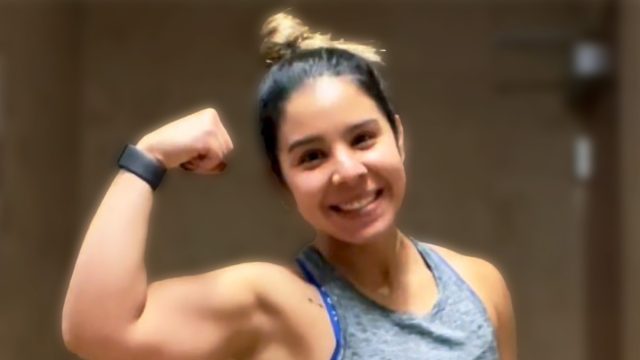4 Warning Signs You Are Eating Too Much Protein
Protein is one of the buzziest weight loss words of 2024. While it has always been an important component of a healthy diet, it seems like it's all health experts and fitness influencers have been talking about lately. Why? Science has found consuming more protein than the recommended dietary allowance not only reduces body weight (BW) but also enhances body composition by decreasing fat mass while preserving fat-free mass (FFM) in both low-calorie and standard-calorie diets. However, according to The Fitness Project, weight loss coaches, you might be eating too much protein to lose weight. "4 suspicious signs you are eating too much protein to lose weight," they wrote across the viral Instagram video.
Protein Helps Keep You Fuller Longer, Sustain Energy, and Control Cravings
"Eating a high protein diet can be beneficial for weight loss as it keeps you fuller longer, sustain energy and control cravings," they write. "But there are a few signs you might be eating too much protein for weight loss:"
Suspicious Symptom: Digestive Discomfort
The first sign to look out for? Digestive discomfort, which includes bloating or constipation. "A very high-protein diet, especially from animal sources, can cause digestive issues if fiber intake is too low," they point out.
RELATED: 25 Health Mistakes This Ex-College Athlete Made in Her 20s "So You Don't Have To"
Solution: Amp Up Carb Intake
The solution? Carb up! "Make sure to include enough carbohydrates and fats along with protein for a well-balanced diet," they write. If you aren't sure how much you should be eating, use a macro calculator. "It will tell you exactly how much to eat of each macronutrient," they write.
Suspicious Symptom: Increased Thirst
Are you feeling much more thirsty than usual? Increased thirst is another symptom of excess protein intake. "Eating too much protein can make you feel dehydrated," they write.
Drink More Water
The solution? Amp up your hydration and drink more water. "Aim for half of your body weight in oz," they write. According to the U.S. National Academies of Sciences, Engineering, and Medicine men should drink about 15.5 cups (3.7 liters) of fluids a day and women about 11.5 cups (2.7 liters) of fluids. The Mayo Clinic explains that hydration is important for a variety of reasons. Water helps get rid of waste through urination, perspiration, and bowel movements, keeps your temperature normal, lubricates and cushions joints, and helps protect sensitive tissues.
Suspicious Symptom: Feeling Sluggish
More fatigued than usual? "Feeling tired or sluggish," is another symptom to watch out for. "Too much protein and not enough carbs can leave you low on energy, as your body needs carbs for quick fuel," they write.
RELATED: Man Runs Every Day For 30 Days and This is What It Did to His Body
Solution: Increase Intake of Fruits, Whole Grains, and Veggies
Similar to the solution for digestive issues, amping up your intake of carbs will help with energy. "Incorporate carbohydrates like fruits, whole grains and vegetables for better energy," they write.
Suspicious Symptom: Stalled Weight Loss
The most obvious intake? Stalled weight loss. "If you're not in a calorie deficit, even while consuming a lot of protein, you won't see weight loss," they write. And if you enjoyed this article, take advantage of these 15 Quick Ways to Lose Body Fat Percentage in a Week.





